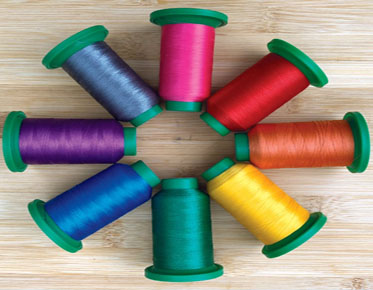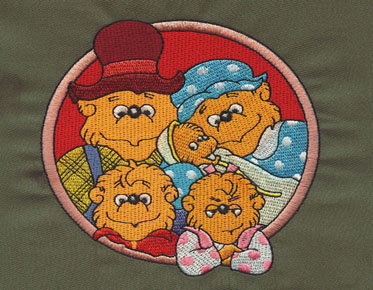Thread for embroidery
Embroidery is a tradition of making decorative embroidery on cloth or other materials by hand or machine. It can also include pearls, sequins, beads, quills, and other accessories to make them look attractive. In ancient times, it was mostly done by hand with needles and yarn. More recently, however, there are specialized sewing machines that can make intricate embroidery patterns.
The art of embroidery is very ancient. As we all know, it is a delicate craft and does not last long. It needs special care to prevent it from spoiling. This traditional art of sewing has come a long way from using ancient gold thread to modern specialty fibers.
Different types of thread are used to make embroidery stitches. If one compares ancient and modern embroidery, one can see a huge difference in the threads and the techniques used to create them. Earlier, only hand embroidery existed, but over time, machines were introduced, and today computerized embroidery has captured the hearts of designers and people. Before choosing an embroidery thread, there are a few factors to consider. The type of fabric, embroidery technique, type of stitch, type of needle, etc. need to be considered. Embroidery threads are available in a variety of colors, types and weights on the market. People can choose the thread according to their requirements.
The first is embroidery floss, which is
available in a wide range of colors. One of its advantages is that the six
strands of embroidery floss can be separated. Therefore, the thickness of the
thread can be changed as required.
Compared to embroidery floss, the heavier yarn is round yarn. It is made of natural or synthetic wool and is mainly used for tapestry work or for embroidery on heavy fabrics. Matte yarn is similar to embroidery floss, the only difference is; it is five layers of thread and has no sheen, giving the work a matte finish. Persian thread is a three-layer thread made of wool or synthetic fibers.
EPE thread is famous and used in many embroidery works such as lace work, black work, cross stitch, cutting, knitting, etc. Silk threads are shiny, stretchy and durable natural fibers that bring a unique touch to embroidery work. Silk thread comes in embroidery floss, pearl thread, ribbon and in different weights, but can be expensive compared to other fibers.
The silk threads used for hand embroidery are seldom sibeile, sisen, sisisi, etc. Lightweight silk thread is used for sewing delicate fabrics, while; heavy duty thread is used for buttonholes and hand or machine stitching. The wire is made by holding the wire in the center and wrapping it with metal foil.
To add color, the foil is coated with polyester and sometimes silver alloy to make it stronger. Metal wires come in different thicknesses and colors like silver, gold, platinum, copper and some antique colors. They are expensive, but the results it brings to embroidery work cannot be achieved with any other thread.
Satin and rayon threads are very fine synthetic threads with a sheen. They are often used to write lowercase letters or to create beautiful embroidereddesigns. It also has a thicker weight for oversized designs or lettering on the back of the jacket. In addition, one can see over-dyed threads produced in cotton and silk embroidery floss.
It shows multiple shades of one color in a single strand, but should not be mistaken for a multi-colored thread. Wool thread is also used for embroidery and is available in various weights such as fine round wool, split Persian wool and tapestry wool. In recent years, new inventions have developed special lines. Fire-resistant embroidery thread, usually using nomex thread, was introduced. It is an expensive thread used for embroidery on racing fire suits or firefighting suits. It is abrasion resistant, self-extinguishing, durable and has a long service life. Single thread or clear nylon thread for invisible sewing and hemming.
Monolon thread is especially used for
sewing ribbons, lace, machine quilting or applications that require blind
stitching. The gather thread is 100% polyester thread that responds to heat. If
you use gather thread on the fabric, and run a warm iron over the seam area,
the thread will create an organized gathering without harming the fabric. This
wavy and wrinkled effect looks very beautiful. This shrink embroidery does not
require any special needles. It can be created with any embroidery or simple
sewing machine. In addition, there are now color-changing lines on the market.
Also known as hot chromates, they change color as the temperature changes. For
example, when the temperature changes, the color will change from colored to
colorless, and return to its original color when exposed to the original
temperature.
The threads contain hot chrome pigments, which are responsible for the color change. This new technology helps embroidery designs change color in sunlight. Finally, fluorescent embroidery thread made from polyester/rayon thread is used to create glow-in-the-dark embroidery designs, logos, patterns or lettering. Fluorescent threads are useful on clothing used for safety purposes. Such clothing can be seen in the dark even without light. Novelty thread is another type of embroidery thread that adds fun to stitching. It is available in a variety of textures, styles and materials. Just like hairy threads are used to make hair or beards. It can be furry, metal, textured, leather, plastic, etc.
In addition, wired threads are also seen in the market. They are not used for normal stitching, but are used to provide a surface finish on a design or to add dimension and detail to a piece. The wire is hidden in the threads; therefore, it can be bent, twisted and crimped to maintain its shape. In addition, gold embroidery threads are produced. The UK is known to make some of the best gold wire or wire in the world and still follows the traditional method of making gold wire.
Finally, embroidery threads can be made
from natural and synthetic fibers. Synthetic fibers such as PET, nylon, nomex,
viscose rayon are in high demand for embroidery work. With the advent of new
technologies, specialty threads are used for special purpose applications.



